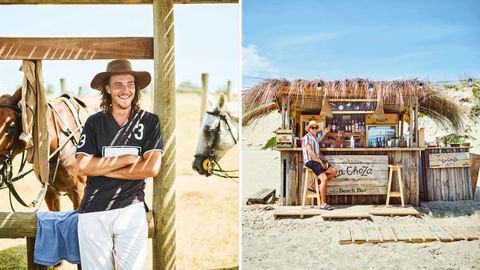
Uruguay’s beach scene is known as one of the best in South America. But the epicurean delights of its rich, ranch-filled interior and rolling wine country have, until now, been less explored. John Bowe saddles up and tucks in. Photographs by Christopher Churchill
By the time I’d breezed through automated border control at Montevideo’s Carrasco Airport, received an earnest bro handshake from the rental-car guy, crossed town in rush-hour traffic in under 30 minutes, and devoured a plate of barbecue at the Mercado del Puerto, I remembered why I’ve always loved coming to Uruguay. There’s not a mellower, humbler, more reliably agreeable country in the world—nor one with better meat.
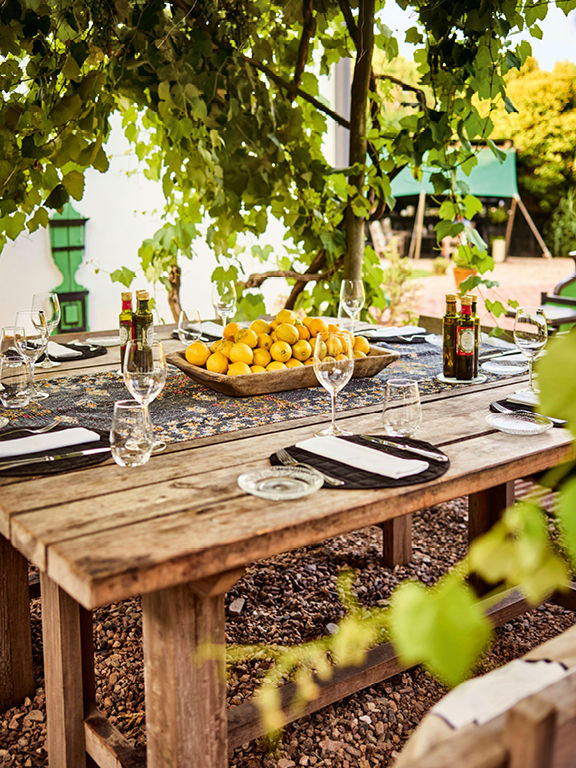
It was early December 2019, and I was back in Uruguay for the first time in over a decade. I’d justified my carnivorous meal by framing it as a litmus test. Had the menus changed at this cluster of parillas (restaurants specialising in steak, sausage, and organ meats, grilled over firewood and charcoal) in a former produce market in Montevideo? Had the stalwart, working-class feel of the place become prissy and boutique? Of all my childhood memories of Uruguay, the parilla was a cornerstone.
Seated at the counter, watching the grill-tenders flash arm and sometimes neck tattoos as they offered tastes of grilled provolone, I got my answer. If the formerly grass-fed cows were now slightly fattened with grain, everything else—from the serviceable cappuccino to the dazzling dulce de leche pancake—was exactly as I remembered it.
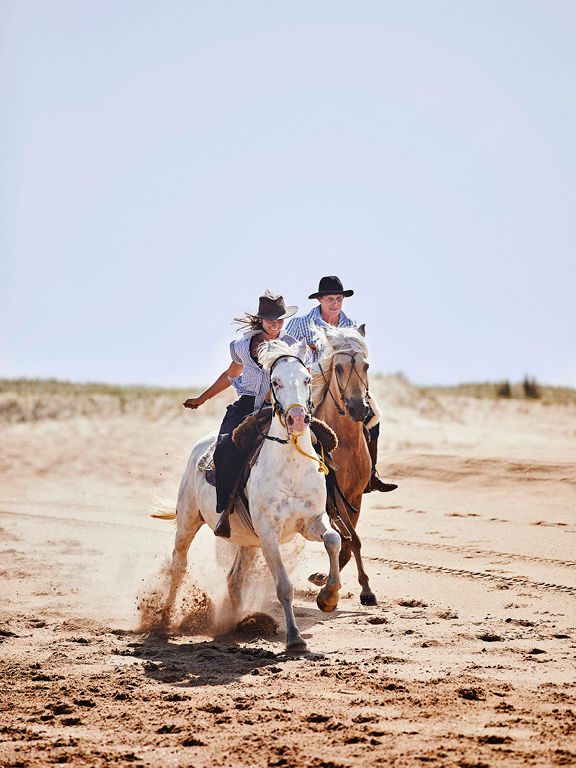
My grandparents fled Serbia during World War II and settled in Montevideo, Uruguay’s capital, in the beachside neighbourhood of Carrasco. Their children eventually dispersed to Argentina and the United States (our former home is now a branch of Banco Chase). But from childhood through my 20s, family vacations consisted of meeting relatives in Buenos Aires, then flying over to the Uruguayan beach town of Punta del Este. No need for a hotel: El Grillito, my aunt’s blue-roofed white-brick cottage, served as a staging ground for beach forays and evening strolls down Gorlero Avenue, Punta del Este’s main drag, in search of churros and ice cream.
As my siblings and I got older, our family visits tapered off. Punta del Este succumbed to overdevelopment, becoming, in my aunt’s words, “a mini-Miami.” My cousins began renting beach houses further down the coast of Maldonado province, and in the quieter province of Rocha next door. Years passed—a couple of decades, actually. Uruguay’s government made world news for legalising gay marriage and marijuana in 2013, well before the United States. With characteristically little fanfare, the country of 3.5 million climbed to number 14 on the Happy Planet Index, and suddenly, this breezy, relaxed string of beaches, which I’d always regarded as a no-frills bolt-hole for affluent Argentines, had recast itself as a glitzy, global destination that people were now describing as the ‘Uruguayan Riviera’ and the ‘St Tropez of South America’.
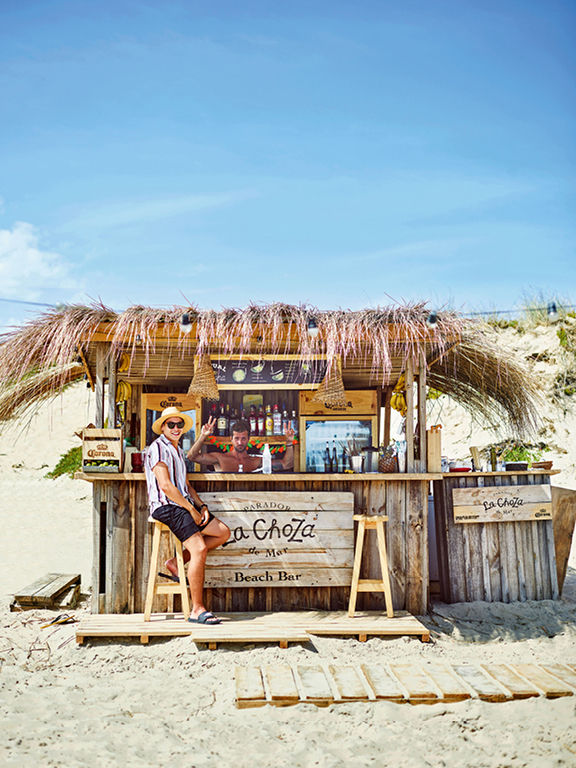
When my cousin, Michele, who still lives in Buenos Aires, suggested a reunion tour of the region—less a search for our roots than a survey of current offerings—I found the idea irresistible. And so, a month later, after a bittersweet drive past El Grillito (no longer in the family), we found ourselves crossing the undulating Leonel Viera Bridge, which separates Punta del Este from the more low-key towns to the east, and whizzing down coastal Route 10, past the miraculously undeveloped sand dunes and wide-open beaches I remembered from my childhood.
The coolest town of them all is, arguably, José Ignacio—a sleepy fishing enclave reborn as the epicentre of Uruguay’s beach scene. My cousin’s tour of the place was decidedly personal. She pointed to houses she’d rented over the years, “some with boyfriends, some without boyfriends”; to the lighthouse on the rocky point that divides the town; and to a pebbly beach “where you can come in the morning and buy fish from the fishermen.” Sure, she shrugged, with the arrival of pop stars, soccer players, and supermodels, some smaller houses have been replaced by bigger ones. The town has become busier, the shabby outweighed by the chic.
To my eyes, however, the place still looked delightfully unspoiled. Nearly every corner of the town offers one, if not two, angles on the Atlantic. On the one side, there’s the playa brava, meaning ‘rough beach’, which is open to the sea; on the other, the playa mansa, or ‘calm beach’. Both vistas are unmarred by gates, walls, gaudy signage, or garish construction. “Here, you walk to the beach, to the restaurant, to the plaza after the beach to take a coffee. You don’t need a car,” Michele said.
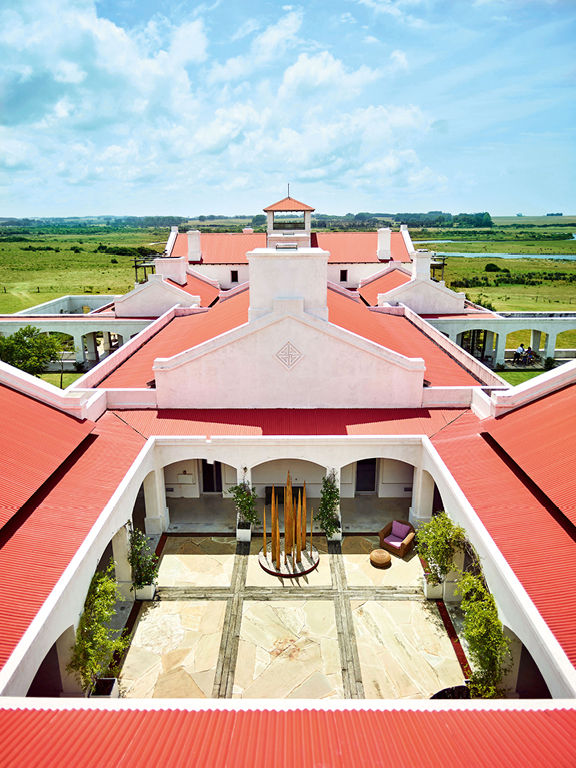
Waving away comparisons to destinations like St Tropez and the Hamptons, my cousin laughed. “St Tropez is crowded and it barely has any sand,” she said. “The Hamptons are beautiful, but socially…?” She squinted. Estimating that the ‘Uruguayan Riviera’ boasts at best 15 hotels with a total capacity of 1,000 guests, she said, “Uruguay, you have beach running the entire length of the coast.” With so much space and so few crowds, the scene is never going to become too intense.
The most successful restaurant in the area is, without question, La Huella. Designed to look and feel like a boathouse, with a thatched roof, sand-dusted wooden deck flooring, and a staff of perfect-looking, evenly tanned twenty-somethings, it’s probably the most painstakingly curated simulacrum of effortlessness you’ll ever see. It’s also the hardest table to score in the busy months of January and February.
My cousin was astonished when the polo-shirted maître d’ seated us on the outside deck near the entrance. “This is the best,” she cooed. “When they don’t want people to see you, they put you in the back.” We skipped past the sushi to order chipirones a la plancha (grilled squid), mollejas (grilled sweetbreads), and white corvina (cooked with almost nothing but salt, and one of the best, purest fish dishes I’ve ever had).

My cousin waltzed through a series of greetings—kiss kiss, both cheeks, “¡Ayyy, qué divino!”—with a steady procession of Argentine friends, and I remembered from childhood the intense social rituals of this still very small world. The sea, the beach, the kids, and the sh–sh–sh-heavy dialect of Uruguay and Argentina felt entirely familiar. What was new, to me at least, was the added mix of voices speaking American and British English, Dutch, German, French, and Portuguese.
At first, Estancia Vik seemed too quiet. From José Ignacio the ranch is 11 kilometres inland, and is one of three properties in Uruguay launched by the Norwegian-Uruguayan billionaire investor and entrepreneur Alex Vik and his wife, Carrie (the other two, Bahia Vik and Playa Vik, are on the beach). The Viks are often credited with cultivating the area’s reputation for international, cosmopolitan elan, so I’d expected something like a glitzy dude-ranch version of La Huella. But when we arrived, ours was the only car in the driveway. A tour revealed a stately living room with striking, kaleidoscopic murals on the walls and ceilings; a grand, brick-lined dining room with ravishing views; a candlelit 5,000-bottle wine cellar; and a graffitied barbecue shack. Hip, plush, and imposing—but no one about. Where was all the see-and-be-seen action?
As Michele and I settled into our airy, lofty rooms, the ranch vibe began to hit me. Outside my floor-to-ceiling window, a brown-orange carancha hawk stood sentry on a wooden fence post. Beyond, a sloping green pasture, horses (bay, dun, chestnut, sable), a meandering river, black cows on the far bank. I’d whimpered about leaving the beach, but my cousin had insisted that we peel ourselves away to explore Uruguay’s interior. “This country is so incredibly rural,” she said. “There are places where kids still ride to school on horseback. They tie their horses up to a post.” I must outgrow my beach-centric conception from childhood, she said. “It’s surf and turf now.”
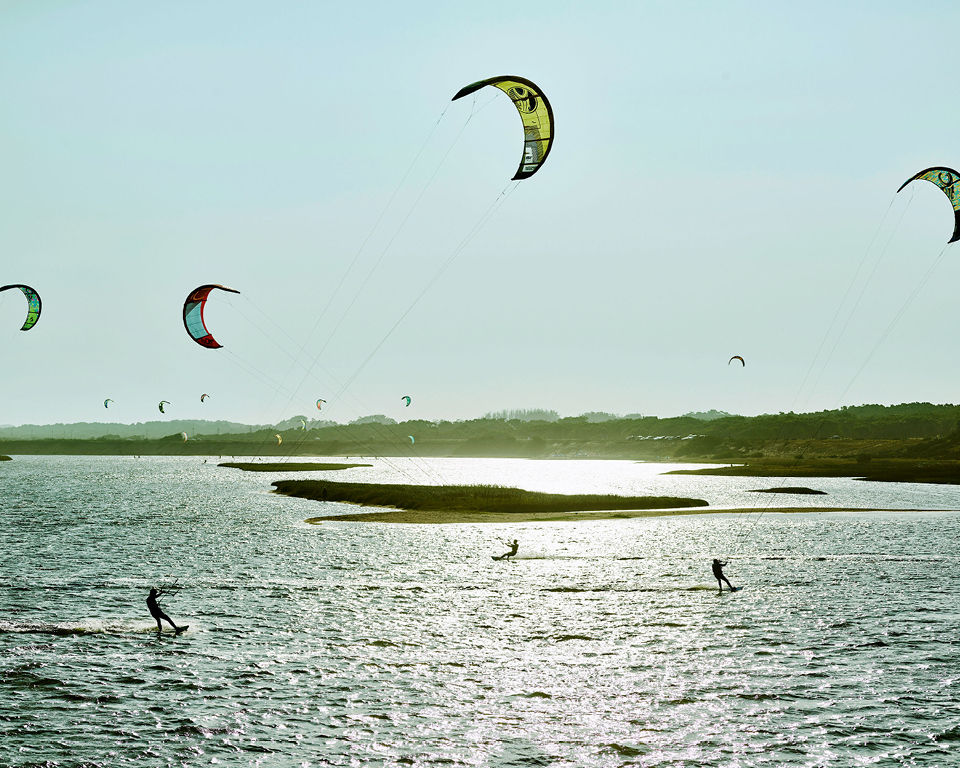
When I was a 21-year-old college dropout, I worked on a ranch in Argentina for a couple of months as an honest-to-god cowboy, and I have fond memories of that time. It had been half a lifetime since I’d been on horseback, however, so when the Vik staff urged me to try a polo lesson, I resisted. First off, I reasoned, polo is for snobs. Second, I’d surely break my pelvis. Most disconcertingly, I’d undoubtedly make an ass of myself. I was proved wrong on all counts. The eternal thrill of man versus ball (in collaboration with a 600-kilogam beast) turned out to be intoxicating. I can’t remember the last time I lost myself in something so thoroughly.
Later in the afternoon, we saddled up again and entered a grove of towering eucalyptus trees haunted by chattering monk parakeets. The excursion had been arranged by Lares (larestours.com), a travel outfit that sets up horseback tours of the rivers and estancias of Uruguay’s interior. Guided by owner Paola Perelli and Agustin Bueno, a twenty-something gaucho, we rode horses fitted out with recados—traditional saddles with comfortable lambskin pads.
The four of us trotted, cantered, and galloped towards the beach, splashing across a shallow lagoon before making our way to the surf. The wind was bracing and the sun low. For miles on either side, the rugged dunes were wild and entirely ours. When we returned to the estancia after dark, hips loose from the horseback riding, the pasture beyond the hotel smelled like herbs. As our eyes adjusted, we saw Orion, the Southern Cross, and the Milky Way, undiminished by light pollution. The allure of surf and turf was becoming more apparent by the hour.
In the past, Uruguay’s interior meant sheep, cows, and very little else. In recent years, however, wealthy Argentines and Brazilians, along with the odd Uruguayan and American, have hired local and international architectural firms to build boxy, Brutalist-inspired dachas with panoramic views. Michele and I passed a dozen such haciendas, simply painted, surprisingly unostentatious, constructed with jagged boulders and natural wood, many still functioning as working ranches.
The splashiest of the new developments dominating the Uruguayan interior, by far, is a 400-acre, 5,80,000-gallon winery, Bodega Garzón, a sleek, state-of-the-art, $85 million enterprise founded by Alejandro Bulgheroni, reputedly the wealthiest man in Argentina. The winery offers tours and a restaurant helmed by Argentine celebrity chef Francis Mallmann. It remains to be seen if Bodega Garzón’s Tannats (big, savoury, spicy reds loosely comparable to Malbecs), Pinot Grigios, Cabernets, and Albariños will pave the way for Uruguay to join the ranks of export powerhouses like Argentina or Chile (in 2018, exports grew to 6.5 million bottles, compared with Chile’s 1.2 billion bottles). But, if nothing more, the development now has people referring to the surrounding area as ‘the wine-making region of Garzón’.
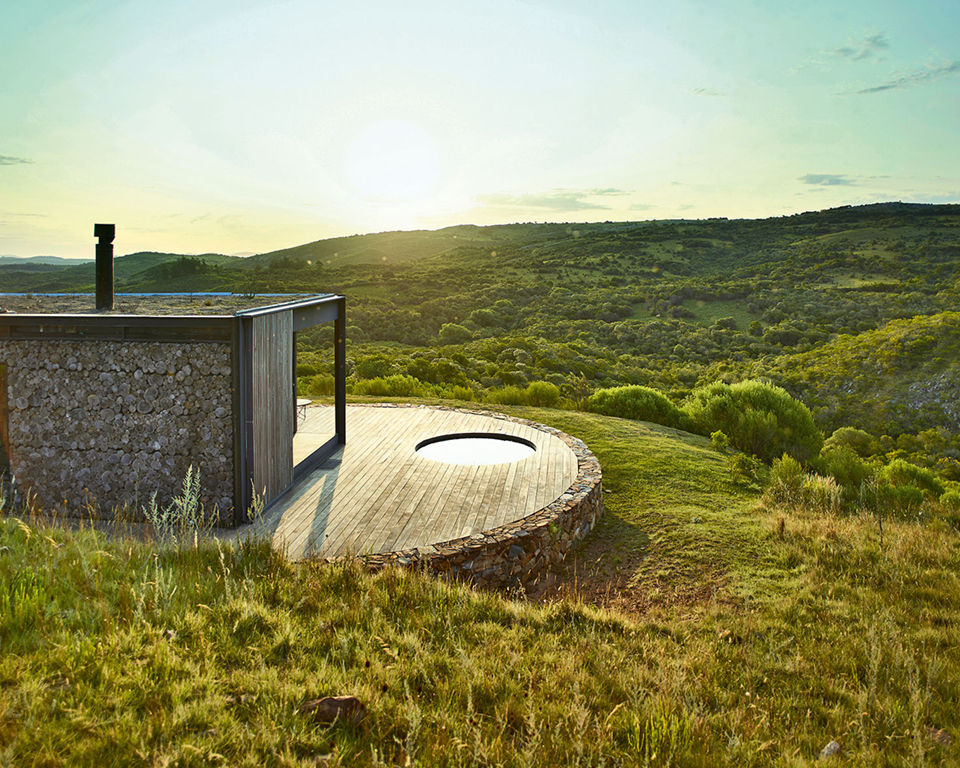
Deeper into the reaches of Maldonado province, the rising hills give way to a rugged region not unreasonably called the Tuscany of Uruguay. We’d booked a stay at Sacromonte Landscape Hotel, a winery with high-design ‘shelters’ set across a sprawling vineyard near the hamlet of Pueblo Edén.
In 2014, Sacromonte’s proprietor, Edmond Borit, left a career as a high-level executive with a European multinational to follow in the footsteps of his grandfather, a French winemaker. He bought 250 acres with the seemingly idiosyncratic goal of leaving 85 per cent of the property uncultivated, so the land could revert to its natural state. “Everyone thought I was having a midlife crisis,” he laughed. “I sold all my stock options, everything.”
With almost austere, artistic conviction, Borit described a mission devoted to celebrating the land while preserving local traditions. Questioning the outsize effects of the bigger vineyards down the road, which, ironically, speak incessantly of sustainability, he said, “I’m interested in utilising the terroir and making great wine, of course. But I’m also interested in getting people to really think about the land, to frame nature for deeper contemplation.”
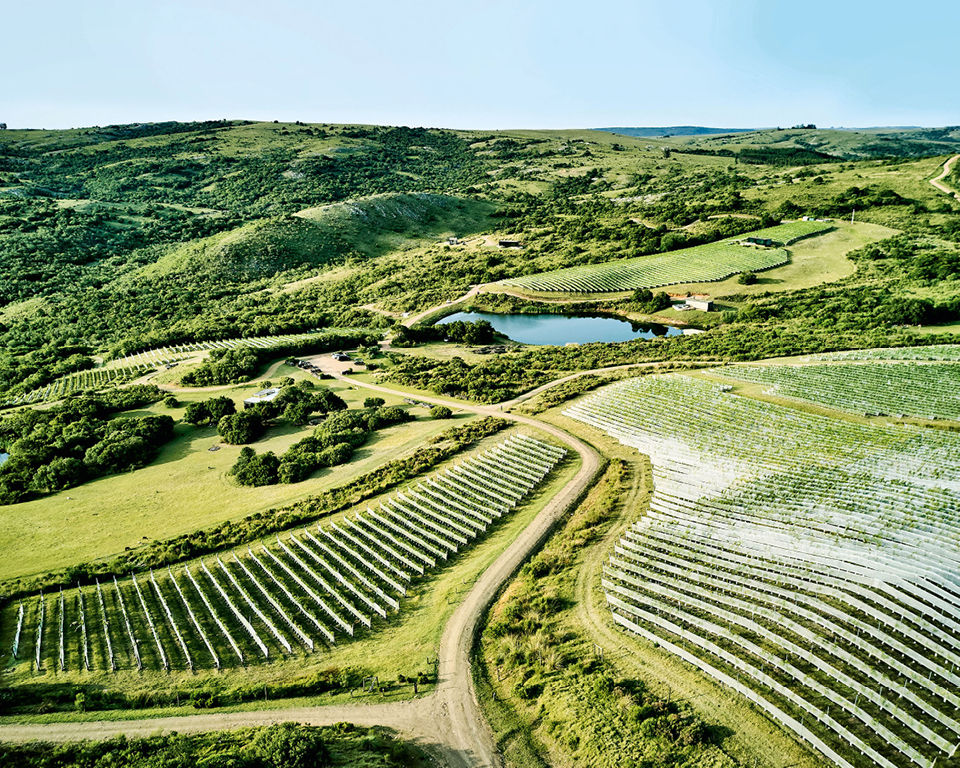
Borit’s villas of steel and reflective glass leave Uruguay’s typical paradigm of beach and ranch far behind, and instead, unlock the romance of its bucolic interior. A hike through Sacromonte’s private valleys led me to a crystal-clear, rushing stream with moss-covered rocks nestled between a corridor of dwarf willows and coronillas—stunted, spiny trees that sheltered clouds of fluttering white moths.
Perelli, the Lares guide, had pointed out that the pine forests and dense, perfumed groves of eucalyptus I’d unthinkingly, since childhood, associated with the country were in fact non-native, imported by Europeans to anchor the sand dunes and yield lumber for building and shade for cattle. In primaeval times, Uruguay was covered with small, scrubby forests—like those regenerating at Sacromonte. As I hiked along the stream, playing peekaboo with a fox running ahead of me, what impressed me most was the silence. The loudest sound I heard all morning was a cow, lowing from across the hill.
That evening, watching the sunset with my cousin over a bottle of Carapé Reserva (an oaky blend of Tannat, Merlot, and Cabernet Sauvignon), it was impossible not to view the mini valley before me like a painting, a place for contemplation, in, of, and for itself, outside time or culture.
I circled back to Pueblo Garzón, about an hour’s drive from Sacromonte. The village has a population of fewer than 300, and seems like an unlikely spot for a culturally refined experience. Moribund for nearly a century before being ‘rediscovered’ by Mallmann, the place now boasts a hotel, two restaurants, and an artists’ residency. Mallmann’s hotel and restaurant Garzón, along with Casa Anna, his adjoining bed-and-breakfast, take the classic Deco design aesthetic of Argentina and Uruguay and blend it with homey, rustic French touches.
I ordered a sirloin milanesa, the classic breaded dish typically made with veal or beef. Coated with a mix of panko, bread crumbs, brioche, and Parmesan, it was three or four times thicker than any I’ve tried, yet extraordinarily tender. The grilled octopus, accompanied by cubed potatoes so smooth and unearthly they looked computer-generated, was briny, smoky perfection (everything at Restaurante Garzón is cooked with wood fire). The raw-zucchini salad with mint and wide-shaved Parmesan was category-shattering.
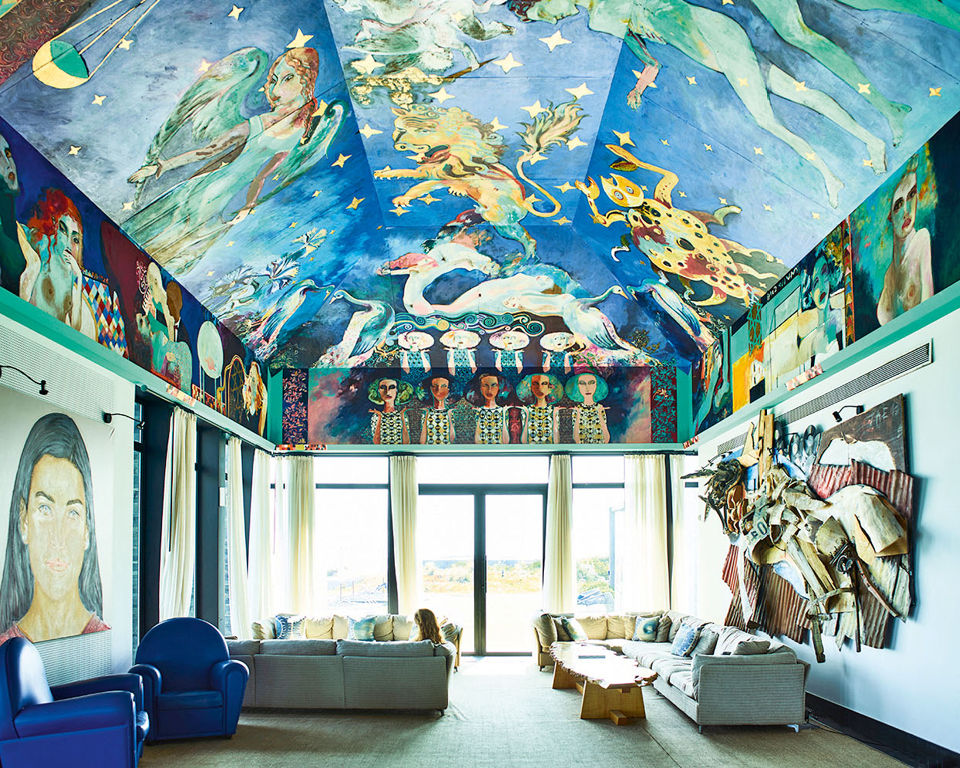
Perelli had praised Mallmann as something of a visionary. “Everything else shuts down after February, so nothing you’re seeing exists outside the holiday window. Mallmann’s open all year, here in the interior. He’s really planted a much deeper stake,” she continued. “He’s raised the level for everyone.”
For my final lunch, I opted for a low-key new spot nearby named Choto, run by a beloved Argentine TV and film comic named Fabio Alberti. As I parked on a grassy hill outside what looked less like a restaurant than an out-of-the-way farmhouse, Alberti, genial and mischievous, came to greet me, then apologised for my bad luck. His wife had left to visit relatives in Argentina, so he would be doing the cooking. He made it sound dire.
Gesturing to an improvised chicken and cattle pen, a garden, a grove of fig and peach trees, and a curious baby lamb who would keep us company through the meal, he shrugged and said, “Well, that’s the tour.” Then he sat me beneath a vine-covered arbour, disappeared inside the house, and began to play Johnny Cash’s 1959 album Hymns on vinyl.
As we shouted amiably through the kitchen window, I learned that choto means intestine in Uruguay, but in Argentina, the term suggests something far cruder. When I asked which interpretation Alberti had in mind for his restaurant, he seemed not to hear me. A few minutes later, he emerged from the kitchen with a large bone on a small plate.
“This,” he announced, “is a cow arm, similar to osso buco. We call the marrow caracú.” Served with snowflake-size chips of sea salt on rectangular slices of toast, the marrow amounted to a tablespoon of food. It was extraordinary. Between plates of homemade headcheese with blueberries and some gooey Camembert he described as “half Camembert, half Muenster” with lettuce from the garden and an exquisitely poached egg, Alberti explained that he’d visited Pueblo Edén sporadically for 15 years, but made the decision to relocate from Buenos Aires only a year ago. Even now, his transition to the restaurant business sounded tentative. “I’m not a cook, I’m an actor. I don’t want to be bound to this. When people want to come, okay, I’ll open. If people like it, great.”
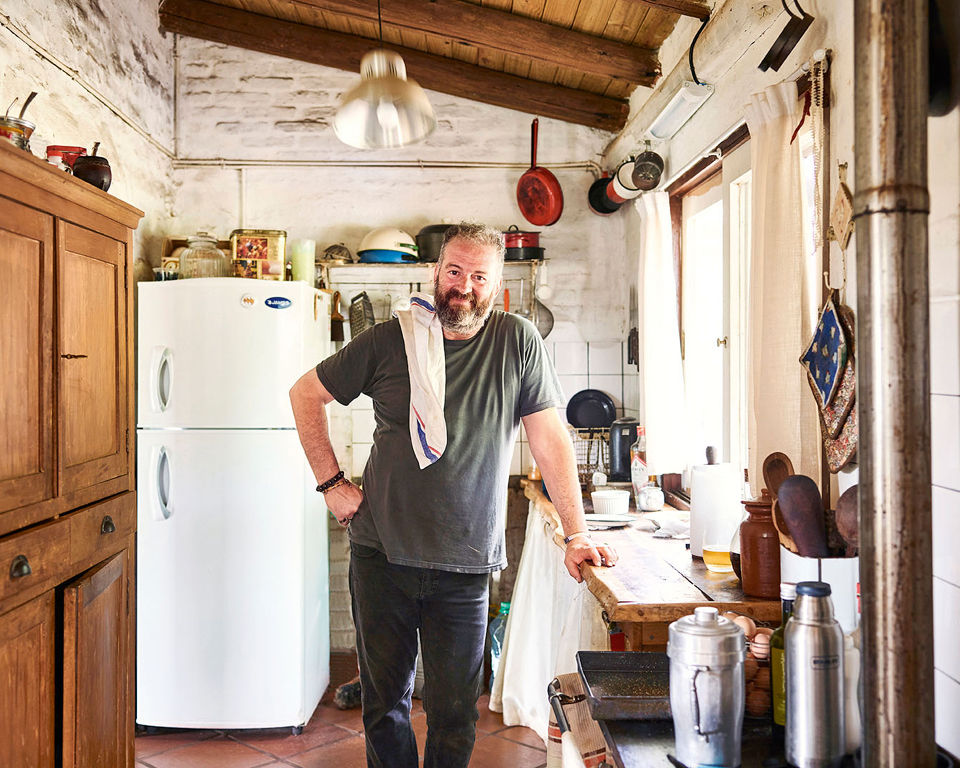
The final course was duck—the first I’d ever seen in Uruguay. It was tender and juicy on the inside, fatty and crispy on the outside. Alberti served it with French fries, cooked three times at varying intervals. For a non-chef, I offered, he seemed to care an awful lot about cooking. He laughed. “I learned everything on YouTube.” The contrast between Alberti’s impeccably considered offerings and the bucolic, unpretentious setting couldn’t have been more stark, or more appealing.
To find Choto, I’d taken a dirt road with three forks, getting out to manually open and close two cattle fences. Alberti, who, almost as an afterthought, charges `3,079 per couple, wine and dessert included, maintains a busy Instagram account but doesn’t bother with other forms of advertising. I found his artistry inspiring and told him that his nonchalant attitude about commerce called to mind an imaginary, purist DJ offering free, unadvertised performances on a remote island accessible only by canoe. Alberti seemed pleased by the comparison. “Uruguay doesn’t have much,” he mused. “But what it has, it uses perfectly. That’s how I want to live. I want to work less, have less, but use everything in the best way possible. I think that’s the perfect life.”
Surf and Turf, Uruguay-Style
Getting There
British Airways (britishairways.com) offers flights from Delhi to the Uruguayan capital of Montevideo with layovers in Heathrow and Madrid. Rent a car for the two-hour-long drive to José Ignacio.
Eat
In Montevideo, stop for exceptional barbecue at one of the asado grills in the Mercado del Puerto (mercadodelpuerto.net) before heading on to José Ignacio. At La Huella(entrées `807–`1,173; paradorlahuella.com), beach-shack chic is paired with a sophisticated seafood menu. El Caracol (INR 13,568 per adult, including transport to and from the restaurant; fb.com/caracollagunagarzon), a pop-up dining experience on the beach serving traditional asado, also lays on cooking lessons. Try the divine mollejas, or sweetbreads, at La Olada (entrées INR 880–INR 1,173; instagram.com/laoladarestaurant), and for some of the region’s most memorable cooking, check out the Francis Mallmann–run Restaurante Garzón (prix fixe from INR 4,400; restaurantegarzon.com), where everything is cooked over an open fire. For a unique and entertaining dining experience, book a table at Choto (INR 3,080 for two people; instagram.com/choto.uy), a one-room restaurant run by a well-known Argentine comedian.
Stay
The three Vik hotels in this region put Uruguay on the map for international visitors, and it’s hard to beat their stylish, perfectly appointed rooms and personable staff. Playa Vik (doubles from INR 51,337; playavik.com) and Bahia Vik (doubles from INR 51,337; bahiavik.com) are on the beach, but the dazzling night skies and horseback riding at the inland Estancia Vik (doubles from INR 40,336; estanciavik.com) made it my favourite one. Enjoy some of Uruguay’s best wines while contemplating the vineyards on the hills outside your window at Sacromonte Landscape Hotel (doubles from INR 33,002; sacromonte.com), near the hamlet of Pueblo Edén.
Related: A Handy Guide To The South American Drinking Game










